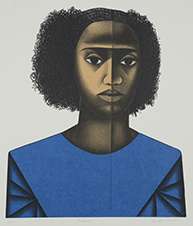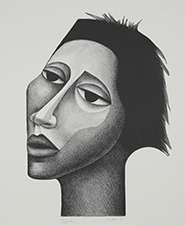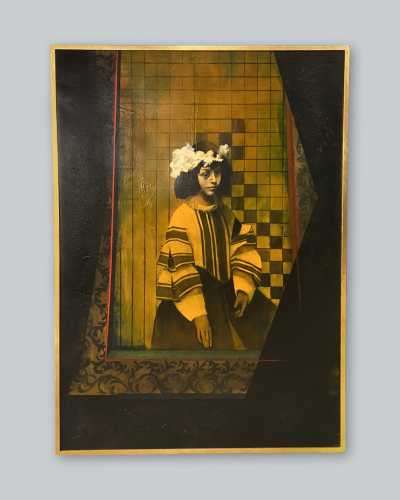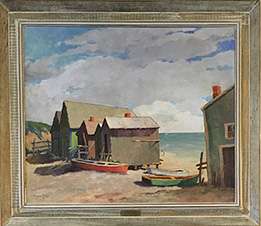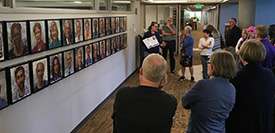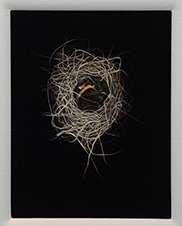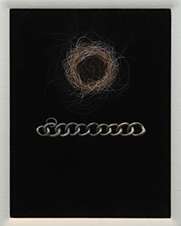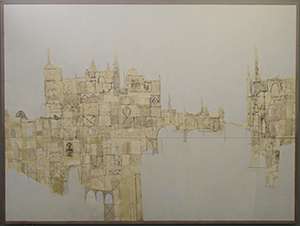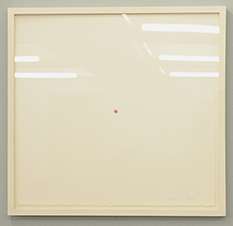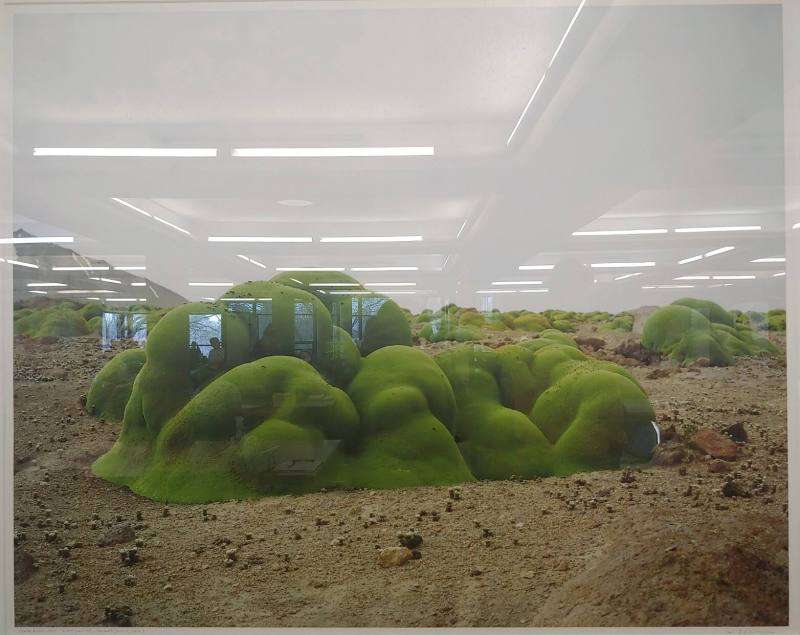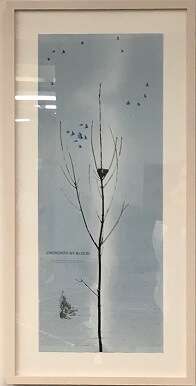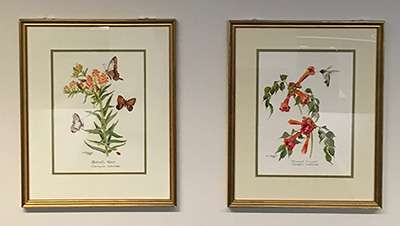This collection contains important works by many contemporary women artists. The installations consist of paintings, prints, and photographs both acquired in 2019 and from the University Museums’ permanent collection. The collection also includes the 2019-2021 Faces of Iowa State series by Iowa artist Rose Frantzen.
The Art in Parks project, coordinated by former dean Beth McNeil, resulted from discussions about the importance of art to campus and how it can bring diverse voices to campus spaces. “These works of art expose students, faculty and staff who visit Parks Library to new perspectives, artists and stories,” McNeil said. “Adding these works [to our collection] is integral for growth and it responds to student requests for broader representation in our art – more women and people of color.”
Works by artists Tilly Woodward, Elizabeth Marie Van Hoesen, Virginia Thorne, Marion J. Kitzman, Bethany Collins, Rachel Sussman, Mary Kline-Misol, Renata Sack, Rose Frantzen, Frank Oscar Lind III, Louise Minert Kelly, Elizabeth Catlett, Molly Scannell and Emily Arthur join works by Grant Wood, Doug Shelton and Christian Petersen in Parks Library.
